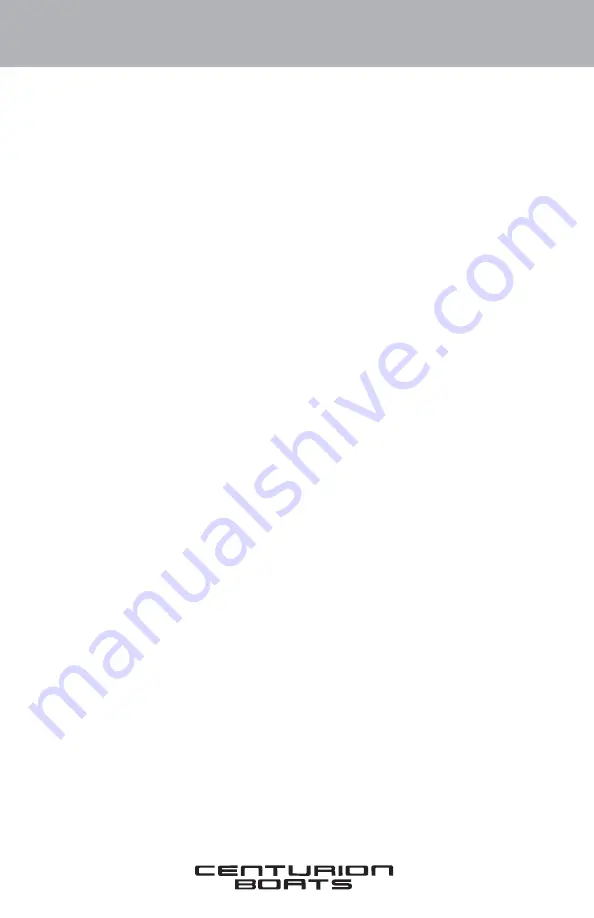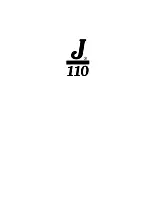
Safety
3-35
Type II
This life jacket is recommended for use in calm water near shore on most inland
waters where quick rescue is likely. A Type II life jacket is similar to a Type I life
jacket, but is not as buoyant or effective in turning the wearer to a face-up
position.
Type III
This life jacket is designed for personal buoyancy when the wearer is alert and
conscious. Type III life jackets require users to turn themselves to a face-up
position. Type III life jackets are recommended in most inland water applications
where quick rescue is likely or when used in the presence of other people.
Type IV
These PFDs are designed to be thrown to a person in the water who can grab and
hold it while being rescued. Never wear a Type IV PFD.
Type V
This life jacket is designed for special activities and may be worn instead of a Type
I, II or III life jacket if used in accordance with the approval conditions on the label.
If a Type V life jacket is part of the minimum on-board life jacket requirements and
if it has a label that indicates “required to be worn,” it must be worn at all times,
otherwise one additional Type I, II or III life jacket must be on-board to satisfy the
minimum life jacket requirements. Some Type V life jackets provide increased
protection against hypothermia.
Other special life jackets are available for skiing and other water sports. These life
jackets are constructed with materials suitable for high-impact falls. When
selecting these life jackets, ensure that they meet USCG approval requirements.
Note:
Inflatable USCG-approved life jackets are not to be used by persons
under the age of 16.
Children’s Life Jackets
All life jackets are clearly labeled with the appropriate weight range. Check the
label to match the weight range of your child. To check for a good fit, pick the child
up by the shoulders of the life jacket. If the life jacket fits, the child’s chin and ears
will not slip through.
Children weighing between 30 and 50 pounds may like the freedom of movement
that a Type III life jacket provides; however, a Type I or Type II life jacket will usually
offer greater protection for most children in this weight range, especially those who
cannot swim.
• Use a life jacket with a collar that turns a child’s face up in the water. It must
have strong straps and buckles, a handle on the collar and, preferably, be bright
yellow or orange in color for high visibility.
Copyright 2019
Ken Cook Co.
All Rights Reserved
www.KenCook.com/marine
Summary of Contents for Fi21
Page 1: ...Centurion_Cover_2019_Layout 1 10 24 2018 9 48 AM Page 1...
Page 3: ...This Page Intentionally Left Blank...
Page 7: ...iv This Page Intentionally Left Blank...
Page 17: ...Section 1 1 10 This Page Intentionally Left Blank...
Page 27: ...Section 2 2 10 This Page Intentionally Left Blank...
Page 48: ...Safety 3 21 Figure 3 4 Figure 3 4 CNTRN 0050B A...
Page 68: ...Safety 3 41 Figure 3 10Centurion Ri237 Figure 3 13 Figure 3 11Centurion Ri217 Figure 3 14...
Page 69: ...Section 3 3 42 Figure 3 12Centurion Fi25 Figure 3 15 Figure 3 13Centurion Fi23 Figure 3 16...
Page 70: ...Safety 3 43 Figure 3 14Centurion Fi21 Figure 3 17...
Page 71: ...Section 3 3 44 This Page Intentionally Left Blank...
Page 131: ...Section 8 8 24 Fi23 Ballast Tank Locations Figure 8 22 Fi21 Ballast Tank Locations Figure 8 23...
Page 165: ...Section 10 10 10 This Page Intentionally Left Blank...
















































